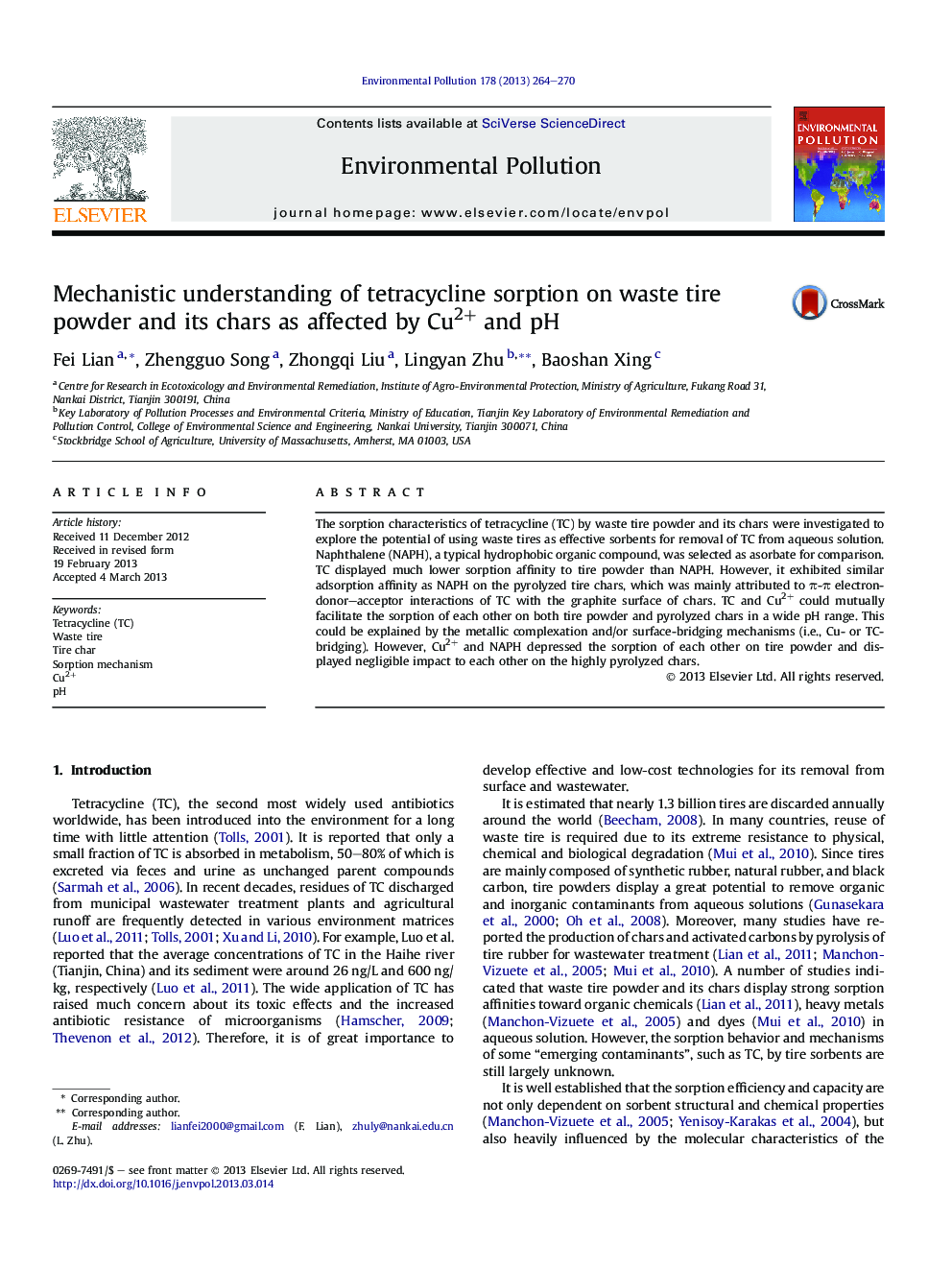| Article ID | Journal | Published Year | Pages | File Type |
|---|---|---|---|---|
| 6318938 | Environmental Pollution | 2013 | 7 Pages |
â¢Tire chars could be effective sorbents for tetracycline wastewater treatment.â¢Tetracycline and Cu2+ facilitate sorption of each other on tire sorbents in a wide pHs.â¢Naphthalene and Cu2+ depressed the sorption of each other on tire powder.â¢Naphthalene and Cu2+ displayed negligible effect to each other on carbonized chars.
The sorption characteristics of tetracycline (TC) by waste tire powder and its chars were investigated to explore the potential of using waste tires as effective sorbents for removal of TC from aqueous solution. Naphthalene (NAPH), a typical hydrophobic organic compound, was selected as asorbate for comparison. TC displayed much lower sorption affinity to tire powder than NAPH. However, it exhibited similar adsorption affinity as NAPH on the pyrolyzed tire chars, which was mainly attributed to Ï-Ï electron-donor-acceptor interactions of TC with the graphite surface of chars. TC and Cu2+ could mutually facilitate the sorption of each other on both tire powder and pyrolyzed chars in a wide pH range. This could be explained by the metallic complexation and/or surface-bridging mechanisms (i.e., Cu- or TC-bridging). However, Cu2+ and NAPH depressed the sorption of each other on tire powder and displayed negligible impact to each other on the highly pyrolyzed chars.
Graphical abstractConceptual illustration of the effects of Cu2+ on the sorption of tetracycline (TC) and naphthalene (NAPH) on tire powder (TP) and pyrolytic char (C800).Download full-size image
